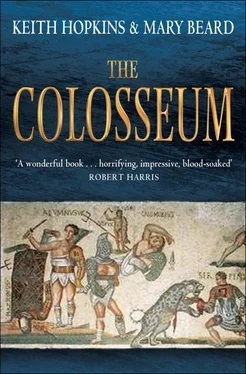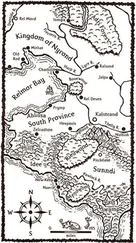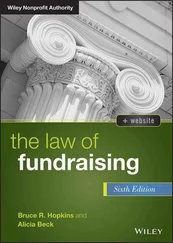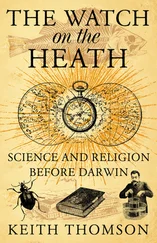Keith Hopkins - The Colosseum
Здесь есть возможность читать онлайн «Keith Hopkins - The Colosseum» весь текст электронной книги совершенно бесплатно (целиком полную версию без сокращений). В некоторых случаях можно слушать аудио, скачать через торрент в формате fb2 и присутствует краткое содержание. Город: London, Год выпуска: 2011, ISBN: 2011, Издательство: Profile Books, Жанр: История, на английском языке. Описание произведения, (предисловие) а так же отзывы посетителей доступны на портале библиотеки ЛибКат.
- Название:The Colosseum
- Автор:
- Издательство:Profile Books
- Жанр:
- Год:2011
- Город:London
- ISBN:9781846684708
- Рейтинг книги:3 / 5. Голосов: 1
-
Избранное:Добавить в избранное
- Отзывы:
-
Ваша оценка:
- 60
- 1
- 2
- 3
- 4
- 5
The Colosseum: краткое содержание, описание и аннотация
Предлагаем к чтению аннотацию, описание, краткое содержание или предисловие (зависит от того, что написал сам автор книги «The Colosseum»). Если вы не нашли необходимую информацию о книге — напишите в комментариях, мы постараемся отыскать её.
The Colosseum — читать онлайн бесплатно полную книгу (весь текст) целиком
Ниже представлен текст книги, разбитый по страницам. Система сохранения места последней прочитанной страницы, позволяет с удобством читать онлайн бесплатно книгу «The Colosseum», без необходимости каждый раз заново искать на чём Вы остановились. Поставьте закладку, и сможете в любой момент перейти на страницу, на которой закончили чтение.
Интервал:
Закладка:
How far this and other such accounts are in any sense eye-witness description is a moot point. They claim to ‘tell it how it was’, but almost every element in the depiction is tinged with Christian symbolism and a Christian message. The bloodshed is treated as a second baptism; Perpetua (as a good modest Christian woman) does not forget to pull down her tunic when the heifer has lifted it to expose her thigh; and so forth. What is certain is that the Martyr Acts are at once an apparent rebuttal of Roman savage sadism, yet at the same time they exploit its seductive appeal. Vulnerable young women, cruelty and wild animals were as much weapons in the triumph of Christianity as in the attempt to suppress it. There can be no doubt whatsoever that the amphitheatre was the setting for dreadful violence inflicted on innocents; but it may have been a more cheapskate, tawdry, even (if this is possible) amateurish kind of violence. Our modern image of the larger-than-life cruelty of the arena is, in part at least, a product of two very different types of investment in such a picture: the boastful exaggeration by Roman emperors and the boastful denunciation by Roman Christians.
THE PEOPLE ON PARADE
It is the first rule of any spectacle that the audience is as important an element as the display itself: we go not only to watch, but to watch other people watching, and to be seen watching ourselves. The audience is part of the show. In the case of the Colosseum, the biggest amphitheatre in the Roman world, the role of the audience was even more loaded than usual. As many recent studies have insisted, the serried ranks of the Roman people, seated in hierarchical ranks according to status, were in effect a microcosm of the Roman citizen body. This was much more extreme than the social segregation of modern spectacles, where the front seats go to those who can (and choose to) pay for them, but may equally well include those who have saved up for months for a special treat as those who would never sit anywhere else. The basic, official rule in Rome, at least by the end of the first century AD, was that civic status determined where you sat. Senators sat closest to the arena in the front rows; behind them the next official status rank of Roman society, the ‘knights’; and so on up to the top of the seating area (what in a British theatre would be called ‘the gods’) reserved for slaves, noncitizens – and women, apart from the state priestesses known as the Vestal Virgins, who sat with the senators in the front. The senators, and maybe the knights too, sat on movable seats; the rest were on fixed benches of either brick faced in marble or, at the very top, in wood. Relegating the women to the back probably ensured that, amongst the elite at least, the audience was overwhelmingly male: no woman of any social pretensions was likely to relish sharing this distant viewpoint with the great unwashed.
Exactly how and when this detailed stratification of the audience had developed is hard to pin down (though it was certainly mirrored in other Roman entertainment venues, such as the theatre). Nor is it certain how carefully it was policed. But ancient writers certainly tell warning – or salacious – stories of what was likely to develop if this kind of segregation was not in place. One of the most bloodthirsty dynasts of the first century BC, Lucius Cornelius Sulla, was reputed to have picked up (or to have been picked up by) his wife Valeria at a gladiatorial spectacle, ‘when the seating was not yet separated’. It is a tale rather reminiscent of the modern story of brushing up against a would-be partner in a row of cramped cinema seats. According to his biographer Plutarch, she walked behind the place where Sulla was sitting, as she made her way to her own; resting her hand on his shoulder, she removed a piece of fluff from his cloak and followed this up with some witty flirtation when he looked a bit taken aback. After the predictable collusive glances, longing looks and knowing smiles, a proposal of marriage followed: ‘he was seduced’ carps Plutarch, ‘by looks and languishing airs, through which the most disgraceful and shameful passions are naturally excited’. But all that was officially off the menu once the regulations were introduced.
An idea of the complexity surrounding the question of who sat where comes from an extraordinary set of Roman priestly documents. A prestigious Roman priesthood, the Arval Brethren (‘the Fraternity of the Fields’), over centuries of the Roman empire kept a record, inscribed in stone, of their activities, decisions and privileges. It is a unique and sometimes surprising document of what Roman priests did and what Roman religious ritual entailed; in AD 80 it included a record of the seats allocated to the priesthood and their various dependants in the newly opened Colosseum. The allocation specifies the particular block (accessed by one of the corresponding seventy-six numbered public entranceways into the amphitheatre, still numbered on the monument), the level of the seating from the front and the row number. The priests were not allocated numbered seats, but roughly 130 Roman feet of seat space in all (the Roman measure was a little shorter than the modern one). Different ranks among the priests and their hangers-on would presumably have occupied places at different levels in the building. So, for example, the allocation specified 42.5 Roman feet spread over eight rows of level one, in block 12; and almost 64 feet in block 53 of the top tier, spread over 11 rows.
No entrance tickets to the Colosseum survive, but we have examples from elsewhere and they must have existed: small tokens of wood, bone or lead, specifying (to judge from the details of the Arvals’ seating) the block or entranceway, level and row number. So far as we know spectators did not pay for their tickets; attendance was one of the perks of citizenship. But how they were distributed is not clear. Given that everything in ancient Rome, ‘free’ or not, had its price, then we should probably imagine that people paid for membership of clubs and societies to which free tickets were issued. Or men of influence, powerful patrons, distributed tickets to their dependants and clients. When they arrived at the Colosseum, spectators would find that the entrance and exit routes for different classes of seating were planned (as we shall see in the next chapter) in a complex pattern so that citizens of different status were kept rigidly separate. Roman snobs did not like to rub shoulders with the less privileged, even if they were squashed side by side with their equals.
Squashed they sometimes were, at least behind the ranks of the elite on the front rows, with their much more ample individual seating. We know from lines etched into the stone benches in other Roman amphitheatres that the average space allocated to ancient spectators was only 40 cm. This is less than the space given to economy passengers on a cheap airline. We also know from elsewhere (no seats survive in the Colosseum itself) that the seatback-to-seatback leg-room averaged 70 cm. Probably Romans were on average slimmer than modern couch-potatoes; they were certainly shorter (adult males on average only 165 cm, or about 5 feet 5 inches). Even so, if the Colosseum broadly followed the space allocations known elsewhere, when it was full most spectators must have been close packed together. It was perhaps this overclose proximity that made the audience a volatile group – as when a riot broke out in the amphitheatre in Pompeii between the home crowd and the people of the neighbouring town of Nuceria and prompted the authorities in Rome to ban gladiatorial shows there for ten years.
Modern writers – ourselves included – have often laid enormous stress on the political stratification and collective identities paraded in the Colosseum audience. The spectators were a microcosm of properly regulated Roman society, sitting in their official Roman costume (the emperor Augustus, a stickler for restoring or inventing traditions, had insisted that all citizens attend shows in a toga), with the highest ranks occupying the best seats in the front and so on up to the slaves and women at the back. They acted out the social order in a ‘political theatre’. This is true – up to a point. But it can be over-stated. For in other ways the audience in the Colosseum displayed the ambivalences of Roman political status and the impossibility of fitting the messy realities of the Roman population into neatly ranked status groups. Part of this is the universal problem that it is always impossible to decide which the best seats in the house really are. The senators may have had a premier ringside position. But, that said, the oval shape and the steep raking of the amphitheatre gave everyone a goodish view, provided that the fight did not end up against the wall of the arena. Besides, if shade and a view of the audience below was what you most valued, then the upper seats might seem much more attractive. For the awnings that were spread over the building to keep off the fiercest heat of the sun only protected the top half of the seats when the sun was at its zenith; the largest area they could possibly have covered given a structure of linen, ropes and wooden ribbing is around 10,000 square metres, roughly half the auditorium. Unless they brought their own parasols or wide-brimmed hats, prestige at the ringside carried a price in sweat and sunburn.
Читать дальшеИнтервал:
Закладка:
Похожие книги на «The Colosseum»
Представляем Вашему вниманию похожие книги на «The Colosseum» списком для выбора. Мы отобрали схожую по названию и смыслу литературу в надежде предоставить читателям больше вариантов отыскать новые, интересные, ещё непрочитанные произведения.
Обсуждение, отзывы о книге «The Colosseum» и просто собственные мнения читателей. Оставьте ваши комментарии, напишите, что Вы думаете о произведении, его смысле или главных героях. Укажите что конкретно понравилось, а что нет, и почему Вы так считаете.












